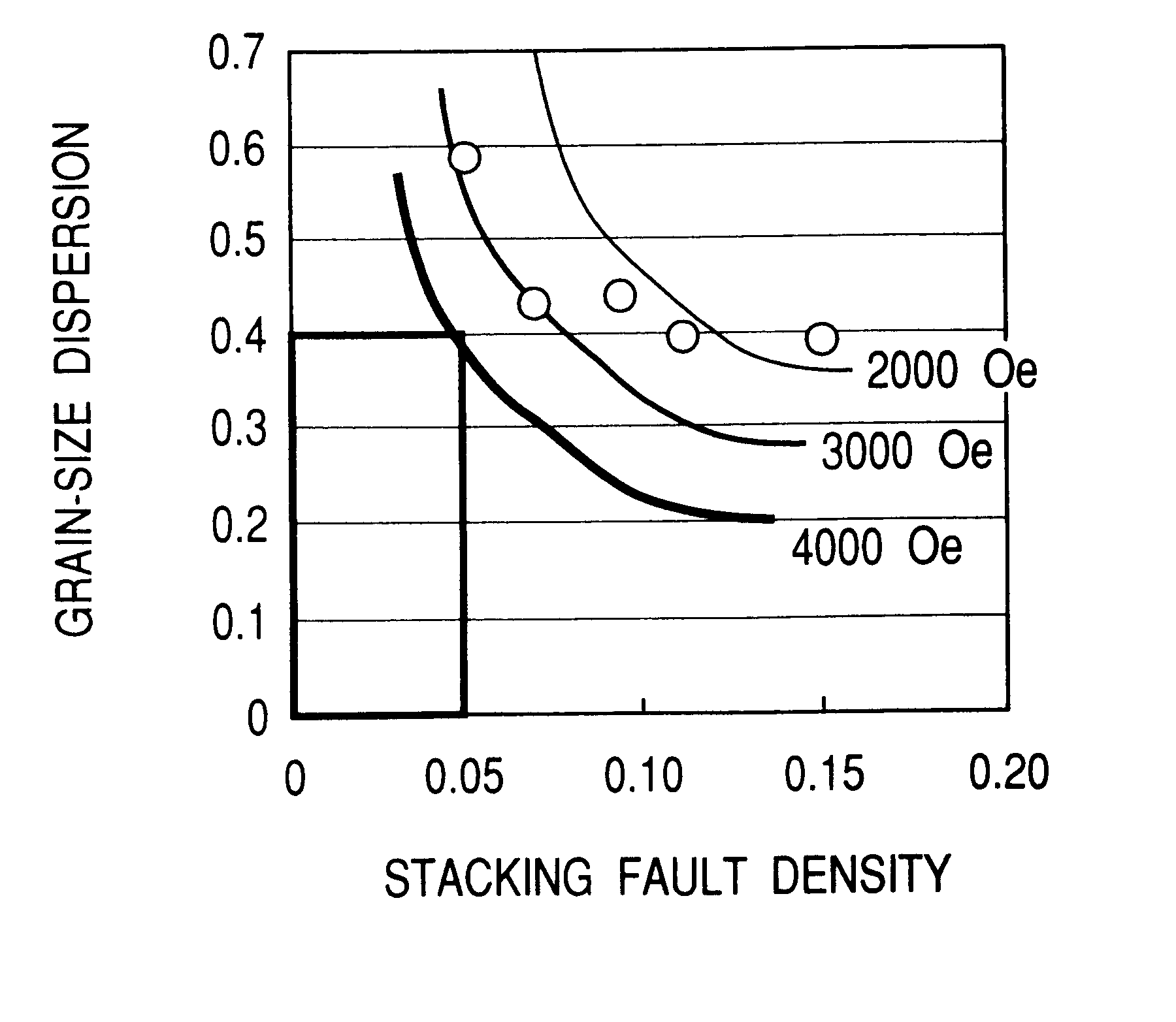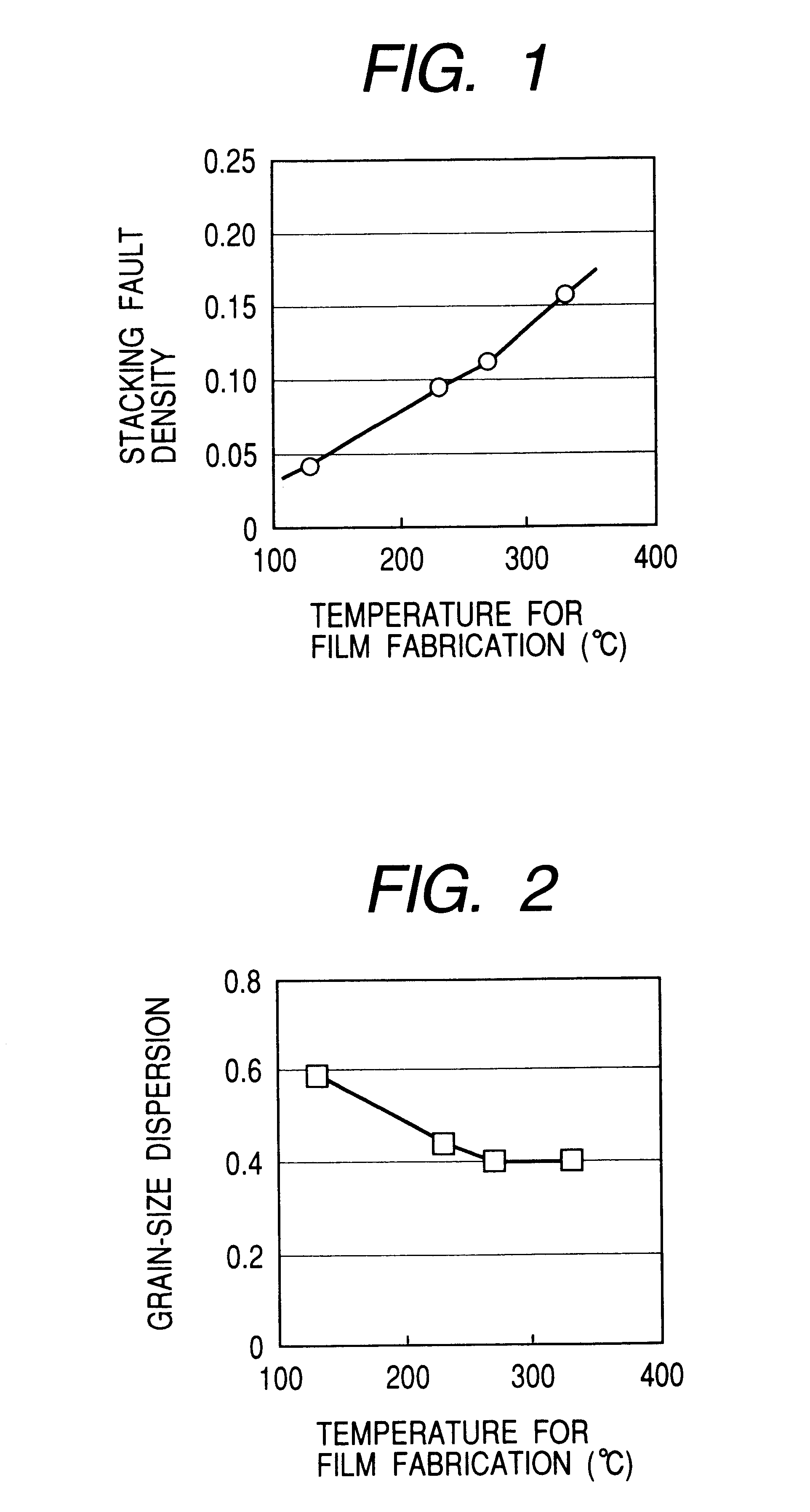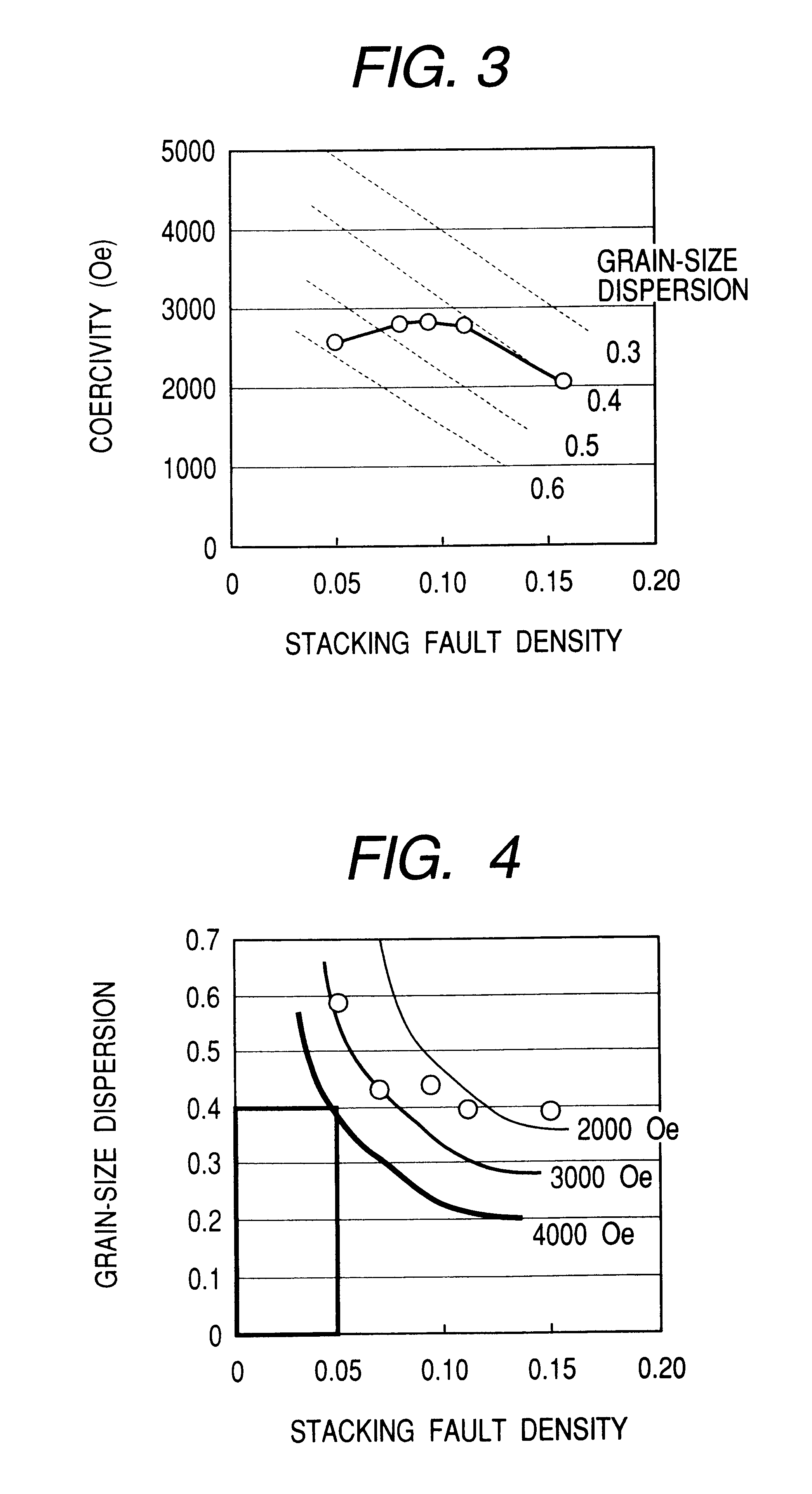Magnetic recording medium and its manufacturing method and magnetic recording system using such a magnetic recording medium
a manufacturing method and magnetic recording technology, applied in the field of perpendicular magnetic recording medium, can solve the problems of poor coercivity, thermal stability, poor magnetic anisotropy, coercivity and thermal stability of the magnetic layer with many stacking faults, and achieve the effect of economic advantage and good thermal stability
- Summary
- Abstract
- Description
- Claims
- Application Information
AI Technical Summary
Benefits of technology
Problems solved by technology
Method used
Image
Examples
example 2
The same procedure as in Example 1 was repeated except that annealing was carried out at a lower temperature and for a longer time. The resulting sample was tested for magnetic characteristics. There is an instance where annealing is performed on a number of magnetic recording media. In practice, however, it is usually impossible to hold all of them in a sputtering vacuum chamber with a limited capacity. So, it is necessary to remove them out of a vacuum chamber. This is the reason why the magnetic recording medium needs a protective film for protection from oxidation. The protective film should preferably be made of a carbonaceous material. To prevent carbon in the protective film from diffusing into the magnetic film, it is necessary not to heat the magnetic medium above 250.degree. C.
The sample of the magnetic recording medium in this example is somewhat similar in structure to that in Example 1. It is composed of the following layers.
Intermediate layer: a laminate composed of a ...
example 3
This example demonstrates the effect that is produced by controlling the dispersion of angles of c-axis. One effective way to reduce the dispersion of particle diameters is to increase the dispersion of angles of c-axis of the columnar crystal grains constituting the magnetic film. The dispersion of angles of c-axis is defined as the full width at half maximum of the dispersion of the angles which the (00.1) plane makes with the surface of the substrate. It is considered that the crystal grains constituting the magnetic film grow from the nuclei which have been randomly generated during sputtering. If those crystal grains which have grown from such nuclei become independent crystal grains, then the dispersion of particle diameters should be about 0.28 according to simulation with Voronoi figure. However, practical crystal growth takes place such that adjoining particles coalesce into a single particle. This is true particularly with crystal grains with a small dispersion of angles o...
example 4
This example demonstrates the effect which is produced by reducing the amount of platinum. The sample of the magnetic recording medium in this example has a soft magnetic film of FeTa(10)C(6), a 5-nm thick intermediate film of NiTa(37.5)Zr(10), a 6-nm thick film of CoCr(17)Pt(8) (as a first magnetic layer), a 12-nm thick film of CoCr(19)Pt(16) (as a second magnetic layer), and a protective carbon layer. The total thickness of the magnetic layer is 18 nm. The soft magnetic film of FeTa(10)C(6) was heated at 250.degree. C. by an infrared lamp after its formation.
The sample was tested for magnetostatic characteristics by using a vibrating sample magnetometer. It was found to have a coercive force of 4000 Oe and a squareness ratio of 1.0. After its test for magnetostatic characteristics, the magnetic layer was observed under a transmission electron microscope to examine the stacking fault density and the dispersion of particle diameters. It was found that the stacking fault density is 0...
PUM
| Property | Measurement | Unit |
|---|---|---|
| temperature | aaaaa | aaaaa |
| coercive force | aaaaa | aaaaa |
| particle diameter | aaaaa | aaaaa |
Abstract
Description
Claims
Application Information
 Login to View More
Login to View More - R&D
- Intellectual Property
- Life Sciences
- Materials
- Tech Scout
- Unparalleled Data Quality
- Higher Quality Content
- 60% Fewer Hallucinations
Browse by: Latest US Patents, China's latest patents, Technical Efficacy Thesaurus, Application Domain, Technology Topic, Popular Technical Reports.
© 2025 PatSnap. All rights reserved.Legal|Privacy policy|Modern Slavery Act Transparency Statement|Sitemap|About US| Contact US: help@patsnap.com



